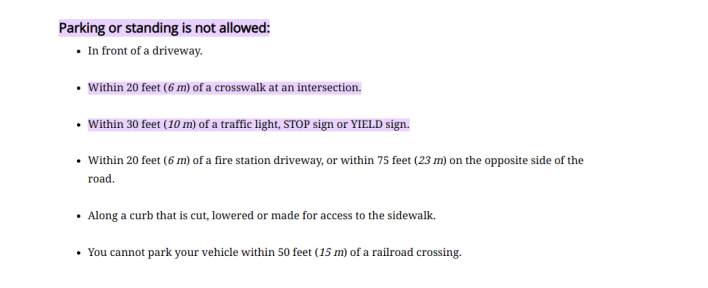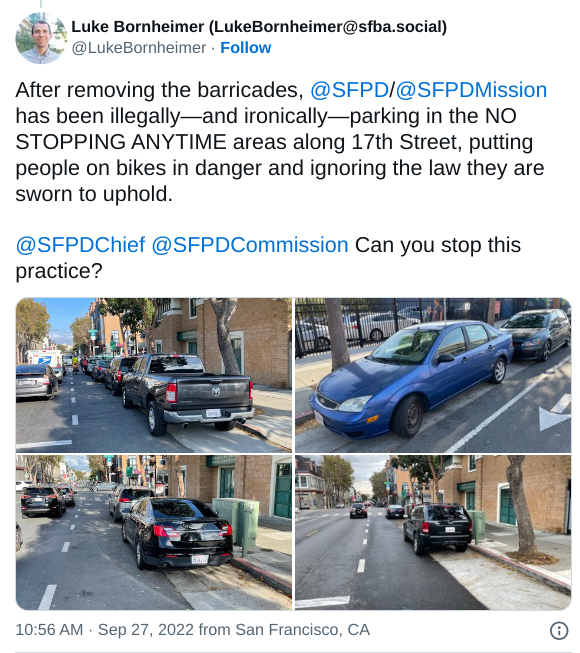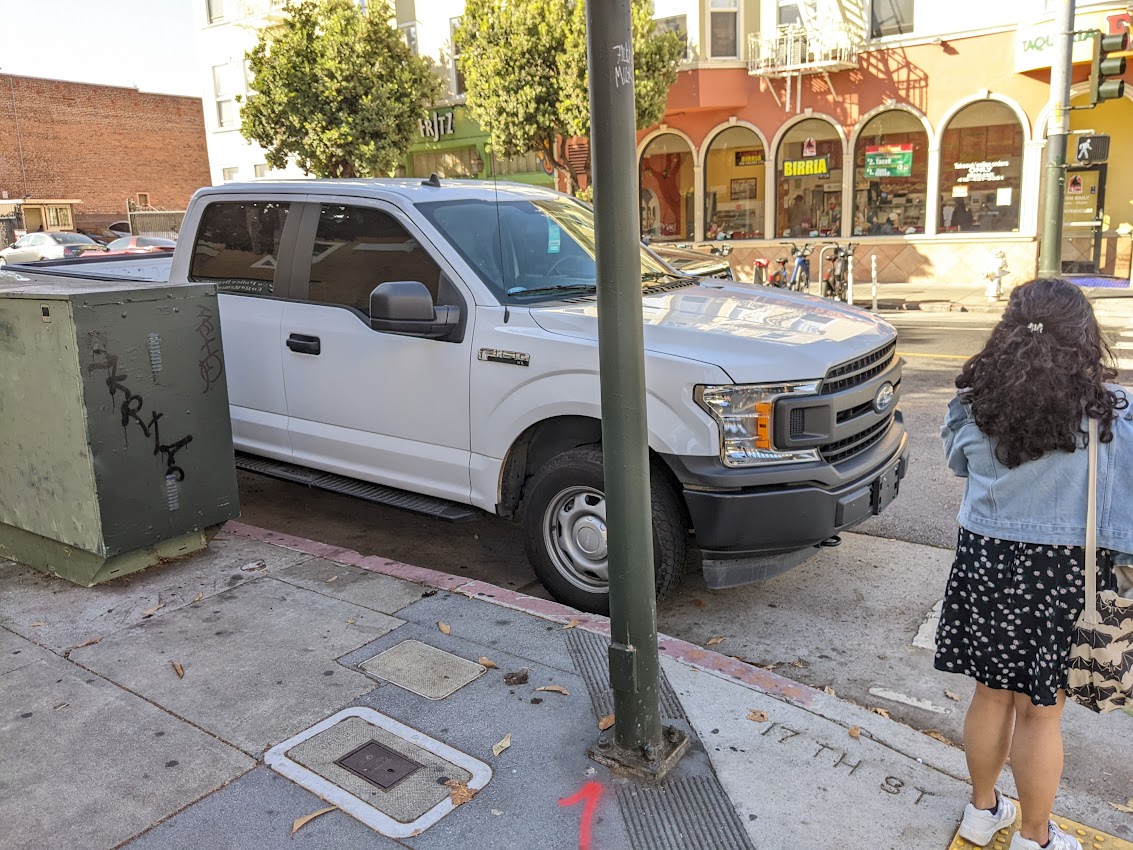Governor Newsom signed A.B. 413 into law on Tuesday. As explained in the Tweet below from the advocates at Los Angeles-based Streets for All, A.B. 413 will, in theory, make it illegal in California to park "within twenty feet of the vehicle approach side of any marked or unmarked crosswalk or within fifteen feet of any crosswalk where a curb extension is present."
✍🏻 SIGNED INTO LAW:
— Streets For All (@streetsforall) October 10, 2023
AB 413 our bill by @alex_lee with @CalBike increases the visibility of people crossing the street 🚶♀️🚗 by preventing cars from parking immediately before the crosswalk.
Thank you @GavinNewsom for protecting pedestrians pic.twitter.com/QQ81PVjwtu
Except Streets for All's Tweet doesn't show the whole picture.
Daylighting was always a weird issue for me. I grew up in New York, where it was always illegal to park close to a corner. I had to learn when I moved to California that it was actually legal to park so close to a crosswalk that drivers can't see if a child or a short person is about to step into the road. That always seemed like madness to me.

In fact, the widespread implementation of forced daylighting in Hoboken, New Jersey, with curb bulb-outs and other measures, is widely seen as a main reason for that city's success in reducing serious and fatal crashes.

But here's the thing about A.B. 413, which could make the law a failure if cities allow it: local authorities can exempt commercial vehicles. Delivery trucks tend to block a larger portion of the sightline than cars, and they tend to want to park wherever they can, including right at the corner.
That's not even the biggest loophole: "Someone from SFMTA can still override the law, since their default for daylighting is ten feet, not twenty," explained advocate Luke Bornheimer.
The text of the law says shorter distances from the curb (it doesn't say how short) can be implemented by cities if:
A local authority establishes the different distance by ordinance that includes a finding that the different distance is justified by established traffic safety standards.
In theory, an unscrupulous city DOT could probably determine that five feet, or five inches, is enough.
"It's an amazing loophole for any agency that doesn't want to do the full twenty feet," said Bornheimer.
That said, San Francisco is already further along than most other cities in the state. It has painted daylighting zones at most intersections on San Francisco's High Injury Network, explained SFMTA spokesperson Erica Kato.
But much like painted bike lanes, what good are painted daylighting zones, when they are regularly violated (see the image at top, taken in front of the Mission District police station)? Such egregious behavior, often by cops parking their private vehicles, is commonplace.

Painting red curbs before A.B. 413 was already a dubious use of resources. But now it's just pointless.
"It takes time and money to paint curbs. And that's not a requirement of this law," said Bornheimer. Rather than wasting paint and time, the law makes it easier for SFMTA to "just declare citywide that it's illegal to park within twenty feet of a crosswalk. SFMTA resources should go instead to things that are more effective than painting and repainting curbs."
To its credit, San Francisco sometimes constructs concrete bulb-outs and rain gardens (see picture below) that shorten crossing distances and physically prevent people from parking at the corner. But these are expensive, involved projects, and the city also needs to figure out quick, inexpensive but effective treatments to physically prevent motorists from parking at corners and crosswalks.

That means all resources should go to getting concrete, planters, steel, cast-iron, or whatever is most economically feasible and block those areas so sight-lines are maintained and so scofflaw drivers literally can't park there. Think of how Emeryville used surplus concrete garbage cans to keep motorists out of areas where they're not supposed to park or drive. Other cities use bike corrals.
But whatever they use, it's got to be something motorists such as the driver of the pickup in the lead image can't simply ignore. And cities have got to get to it quickly. Otherwise, A.B. 413 is going to be just another sop that won't save lives.





